Cognitive Leverage Dynamics: Hacking the Brain's Workload, Tier by Tier
Exploring a structured approach to offloading cognitive work and unlocking greater potential across domains.
What if I told you there are different forms of leverage for the brain? In life, we use things like capital, code, or labor to achieve goals more efficiently, and I believe there's a parallel for how we think. I've been developing a framework called Cognitive Leverage Dynamics, which is about offloading the brain's workload to create more value and tackle higher-level problems—whether you're in business, a creative field, or any domain you're looking to master. It's something I came up with after digging into the Extended Mind Theory and Spiral Dynamics, and I think it has real potential.
The Extended Mind Theory suggests we process information better when we extend our thinking beyond ourselves—through tools like language, phones, or collaboration. Spiral Dynamics outlines tiers of consciousness that evolve over time. I combined those ideas and thought, what if we could structure cognitive leverage into tiers? This framework isn't just for individuals; it applies to organizations or anyone aiming to push their skills to a higher level. It's about getting the most out of your mind by using the right tools at the right stage.
The Tiers of Cognitive Leverage Dynamics
Here's the breakdown: five tiers, structured as holons—each one self-contained but interconnected, building on what came before. The higher you go, the more sophisticated and valuable it gets. Let me walk you through it.
1. Basic Cognitive Leverage
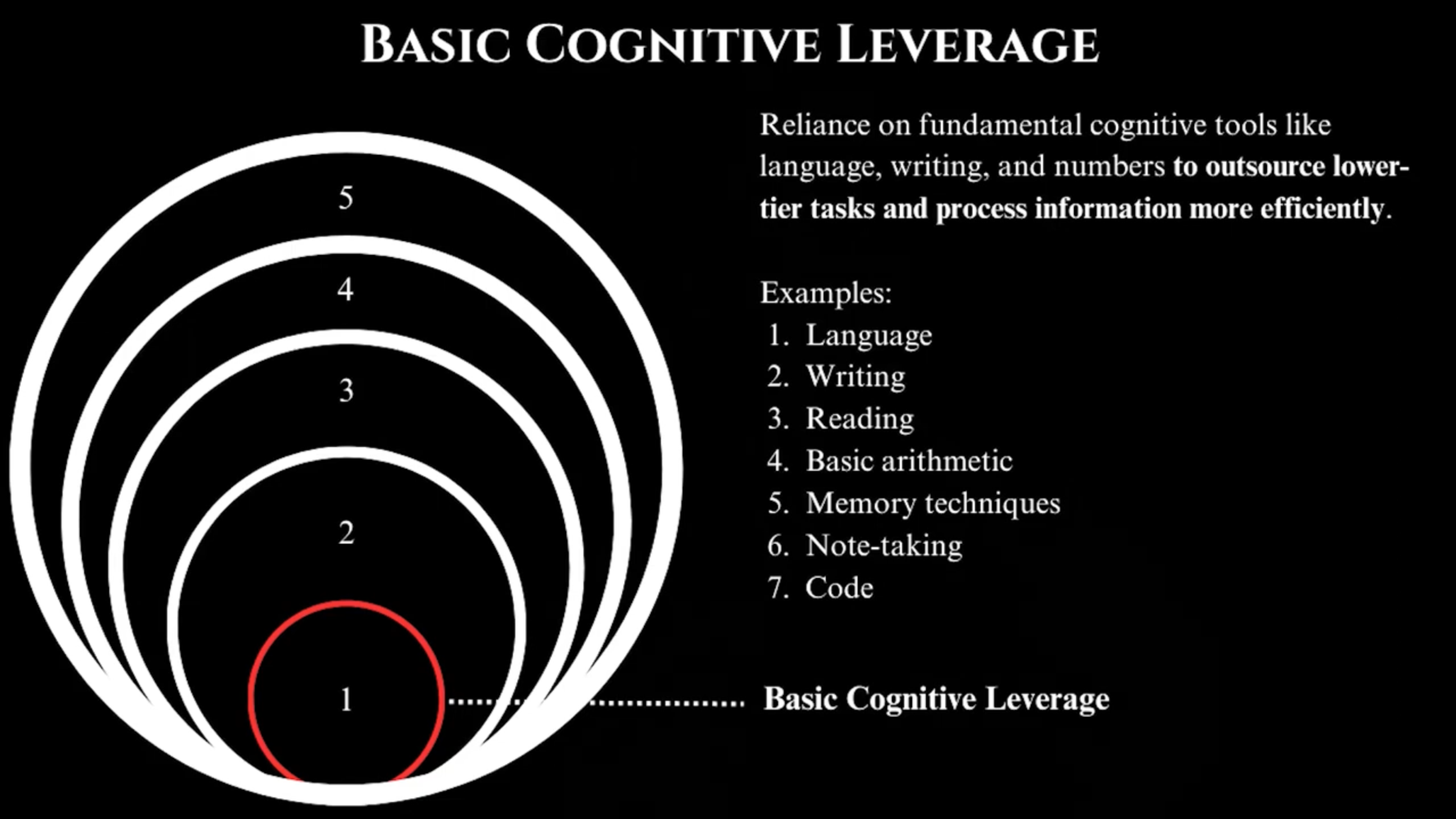
This is the foundation—tools like language, writing, reading, basic arithmetic, note-taking, and memory techniques. More recently, coding fits here too. The point is to outsource lower-tier tasks so your brain can process information more efficiently. It's the starting block for any skill or field you're trying to improve in.
2. Advanced Cognitive Leverage
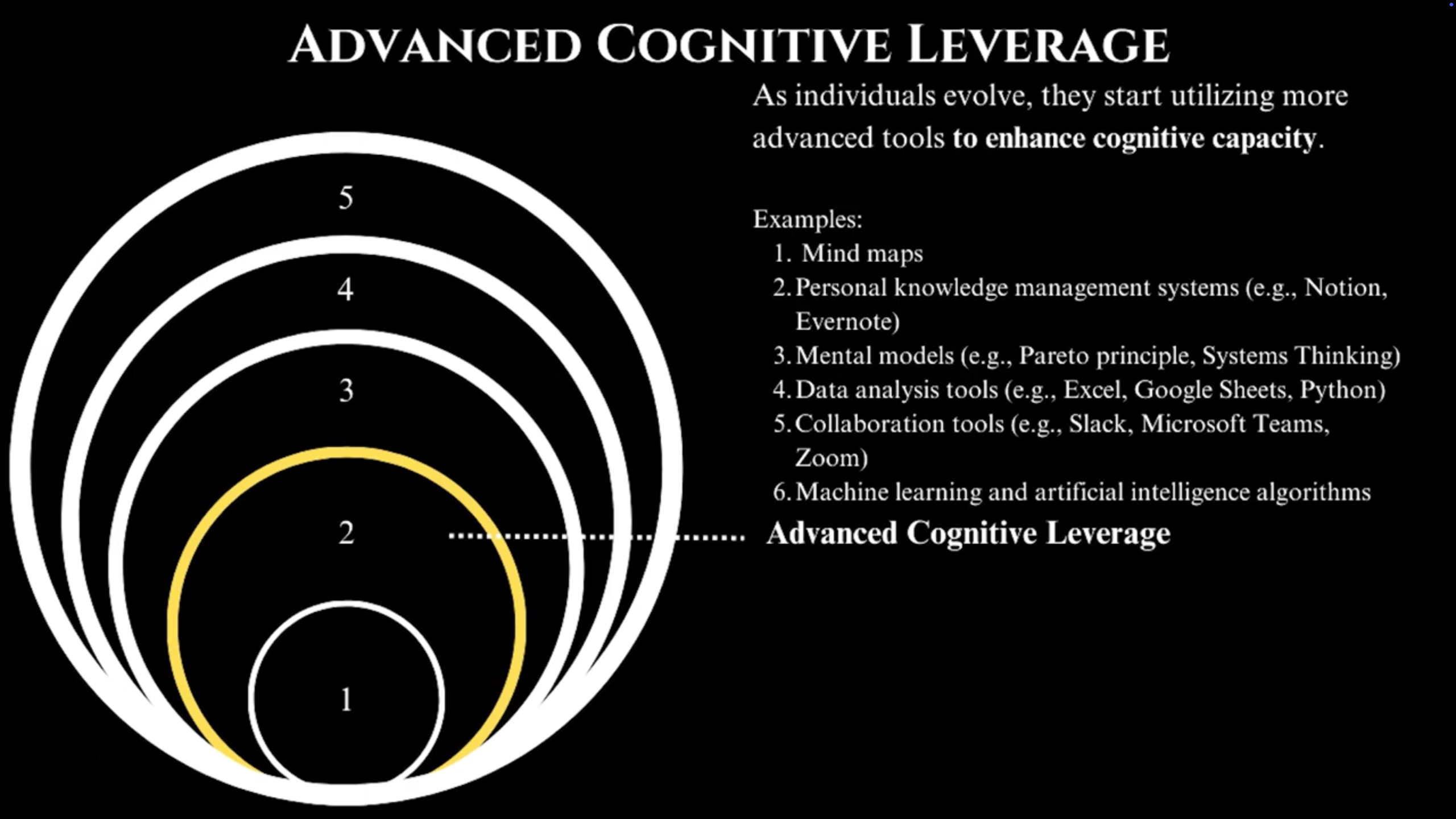
This is where you step up, like moving from beginner to apprentice. You start using more advanced tools—mind maps, personal knowledge management systems like Notion, Evernote, or Obsidian, mental models like the Pareto Principle or systems thinking, and data tools like Excel, Google Sheets, or Python. Collaboration platforms like Slack, Microsoft Teams, or Zoom fit here, along with AI and machine learning—like ChatGPT. With AI, you can generate ideas or outlines in minutes that might've taken days. It's about amplifying your capacity with smarter tools.
3. Integrated Cognitive Leverage
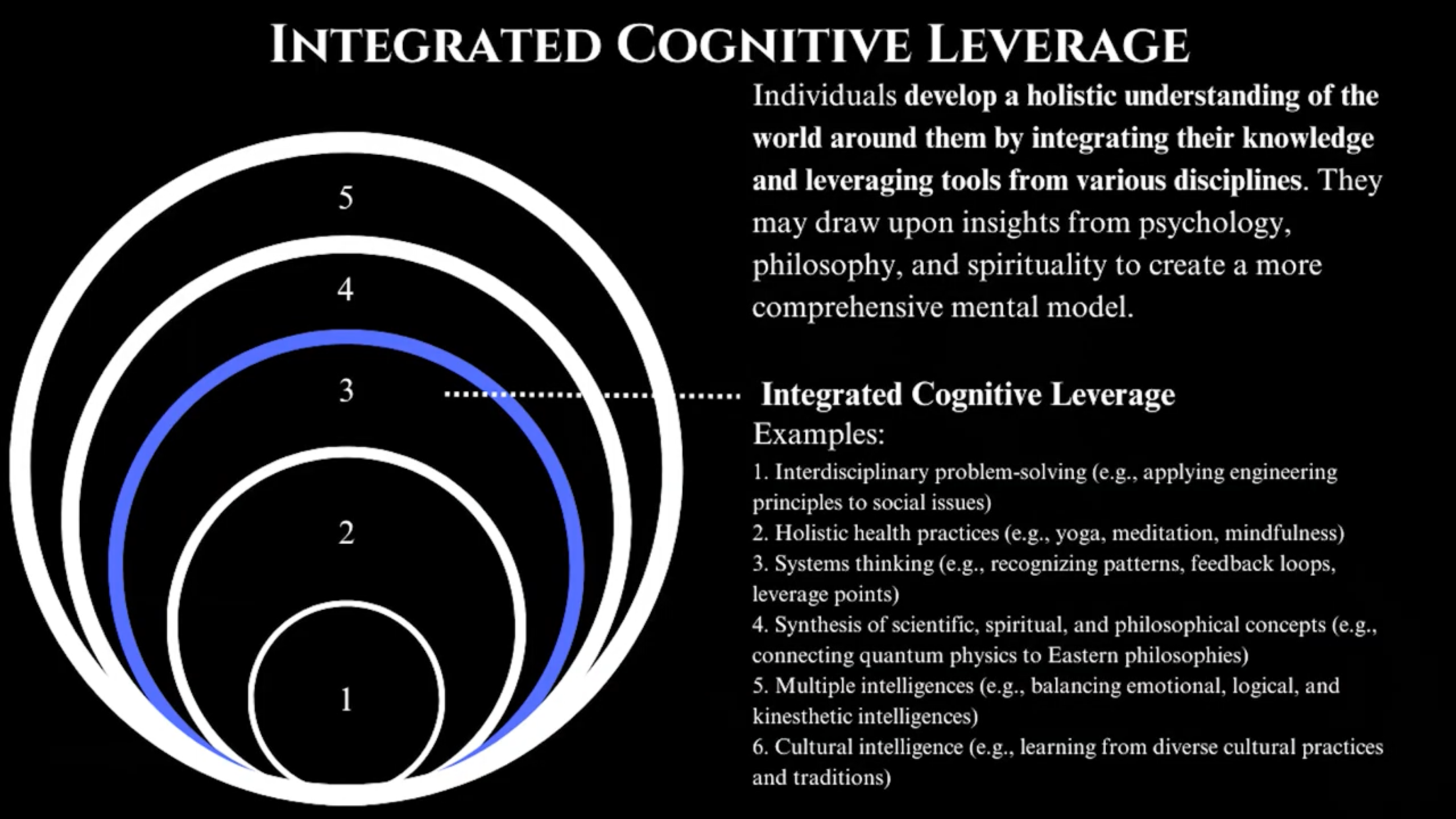
Here's where it gets interesting—you become a synthesizer. This tier is about pulling knowledge from different fields—say, philosophy, shamanism, and artificial intelligence—and weaving them into something cohesive. It's not about staying locked in one domain like science or spirituality; it's integrating them to gain a holistic understanding. Examples include interdisciplinary problem-solving, holistic health approaches, or blending scientific, spiritual, and philosophical concepts. You're leveraging multiple intelligences and perspectives to create something unique.
4. Adaptive Cognitive Leverage
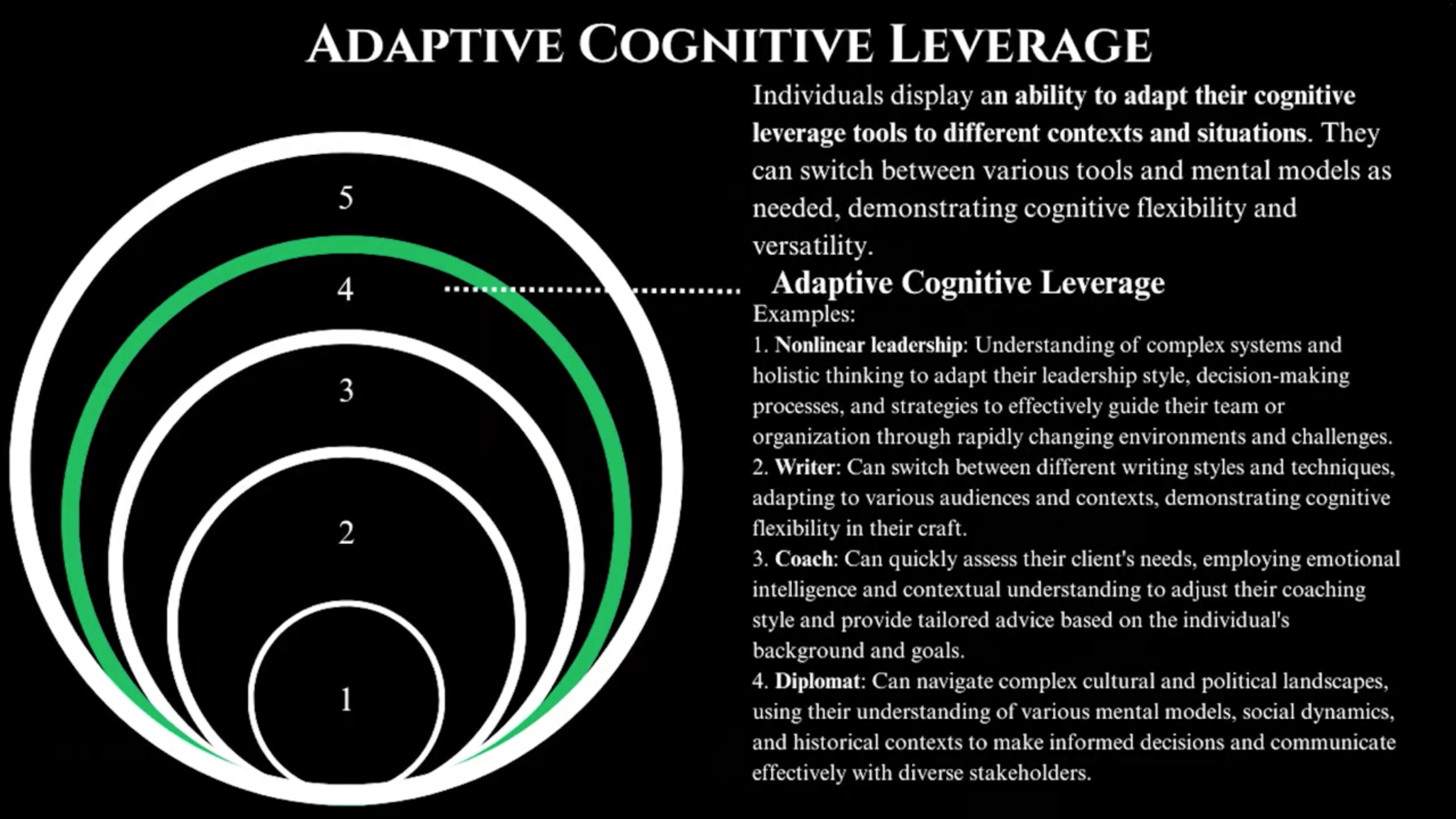
This tier is about flexibility—adapting your tools and skills to different contexts. Think of a leader adjusting their approach based on how people think, or a writer tailoring their style for different audiences. A coach might tweak their teaching for visual learners versus hands-on types, or a diplomat might navigate a deal by understanding a culture's nuances. It's about recognizing the situation and applying what you've got effectively. I've talked about non-linear leadership before—this fits that vibe, adapting to different perspectives to make better decisions.
5. Transformative Cognitive Leverage
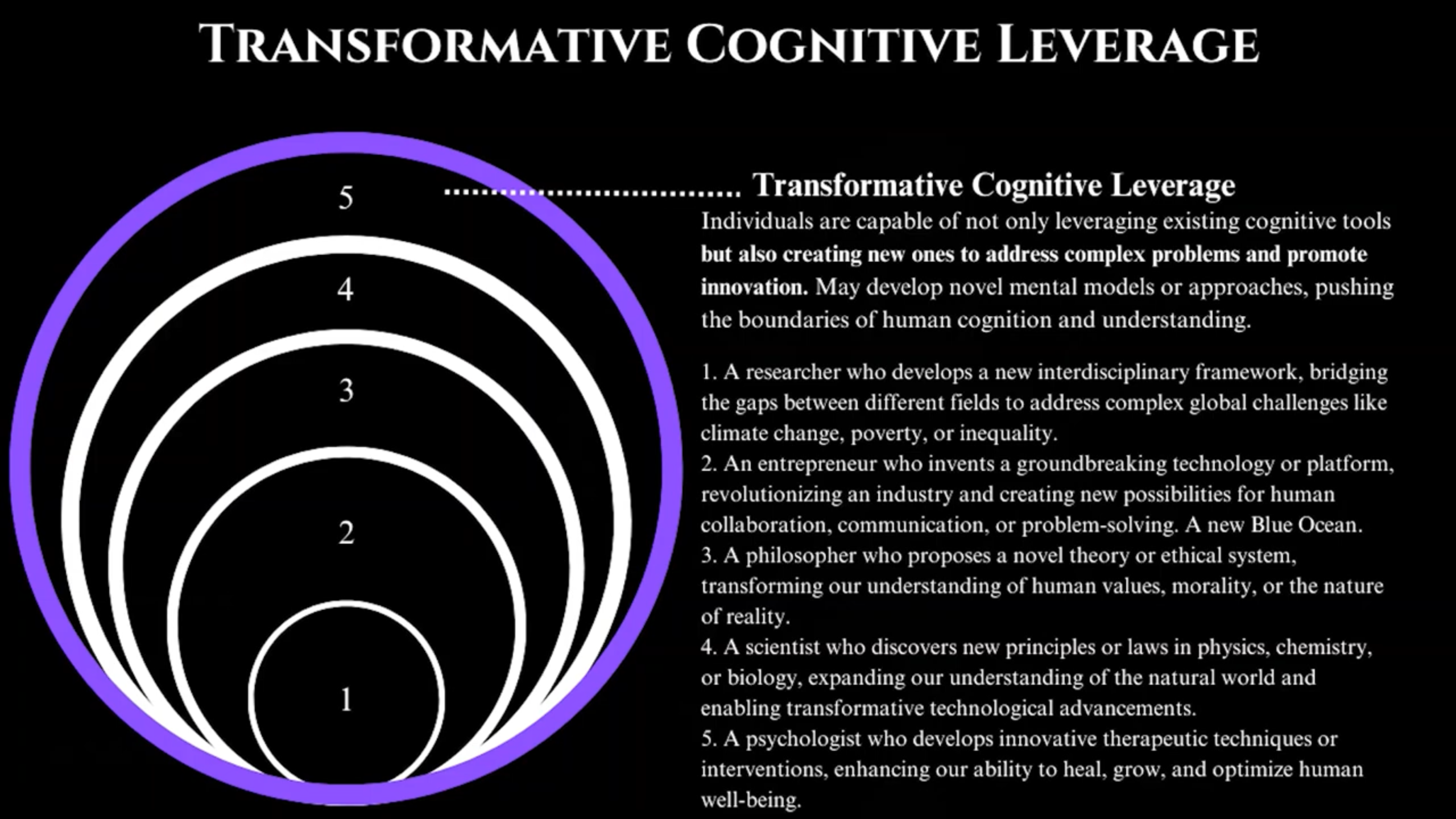
This is the top tier—where you create something new. It's about leveraging all the levels below to address problems in ways that haven't been done before. A researcher might develop a new interdisciplinary framework, an entrepreneur might invent a groundbreaking platform, or a philosopher might drop a theory that shifts how we see the world. Think of a scientist discovering a new equation or a psychologist crafting an innovative therapy. It's the creative genius stage—building your own models and leaving a mark.
The Holonic Structure
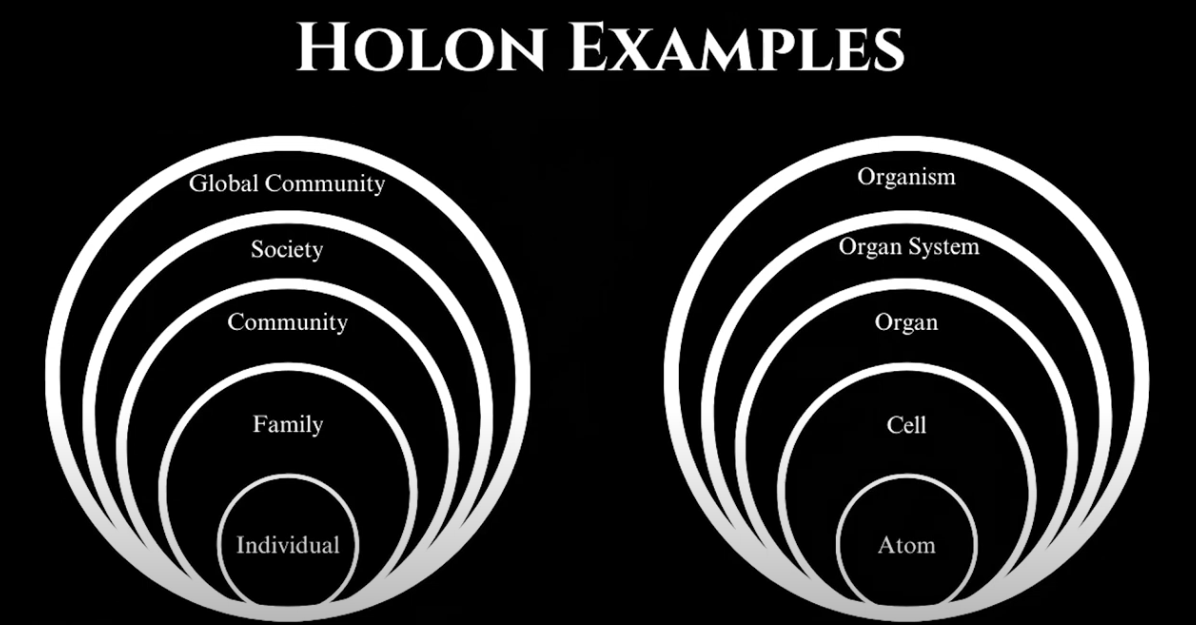
These tiers aren't standalone—they're holons, like units that transcend and include each other. Picture an individual forming a family, then a community, then a society—or an atom building into a cell, then an organ, then an organism. Each stage gets more complex, stacking on the foundational blocks below. As an individual, the more tiers you master in your field, the more "career capital" you build—skills that make you valuable. They're interconnected too; you can't hit Adaptive without the basics, and Transformative relies on everything underneath.
Real-World Examples
Take Elon Musk—he uses Advanced tools like engineering and programming, integrates economics, environmental science, and space exploration, adapts across industries, and creates transformative solutions like electric vehicles and reusable rockets. That's all five tiers in action, adding massive value. Compare that to, say, an independent filmmaker who might stick to Basic (language, storytelling) and Advanced (video editing, social media) but doesn't push into Integrated, Adaptive, or Transformative. They're still leveraging, but the scope and impact are smaller.
How to Apply It
Here's how you can use this framework. First, nail the basics—language, writing, whatever's foundational in your field. If you're into coding or film, master those core tools. Next, step into Advanced—pick up mind maps, data analysis, or collaboration systems to streamline your work. The goal's efficiency; you're offloading the cognitive load so your brain can focus on bigger things.
Then, get Integrated—don't stay narrow. Explore outside your domain. I love reading philosophy, spirituality, futurism—pulling it all in with this integrative backbone I'm working on. It's not about being a generalist; it's having a core you're mastering while bringing in fresh ideas to synthesize something new. After that, go Adaptive—take everything you've learned and adjust it to new situations. How can this tool or insight apply here? What can I pull from past experience to make this work better?
Finally, aim for Transformative—challenge the status quo. Cross-pollinate ideas that seem unrelated—like science and jiu-jitsu—and see what emerges. It's about creating your own frameworks or solutions, something that could shift how things are done. Back when writing wasn't a thing, we only had language. Then writing came, literacy spread, and now we read ideas from 500 years ago—those people leveraged what they had to reach us today. That's the power of this progression.
Why It Matters
This framework's important because it empowers you—or your organization—to tackle complex challenges and come up with groundbreaking stuff. It's about understanding where you are in these tiers and what you can do next. It amplifies your impact, maximizes your potential, and helps you contribute efficiently without carrying all the weight yourself. The world's always shifting—things get stale, chaos creeps in—and this keeps you flexible, ready to adapt or transform when it's time.
For me, it's been insightful just realizing these tiers exist. I'm still fleshing it out, but I wanted to share it. What do you think? Does it make sense, spark any ideas? I'd really appreciate feedback—drop a comment if you've got thoughts. If it resonates and you want to explore more concepts like this, let me know. I'm always digging into stuff like this and happy to dive deeper.